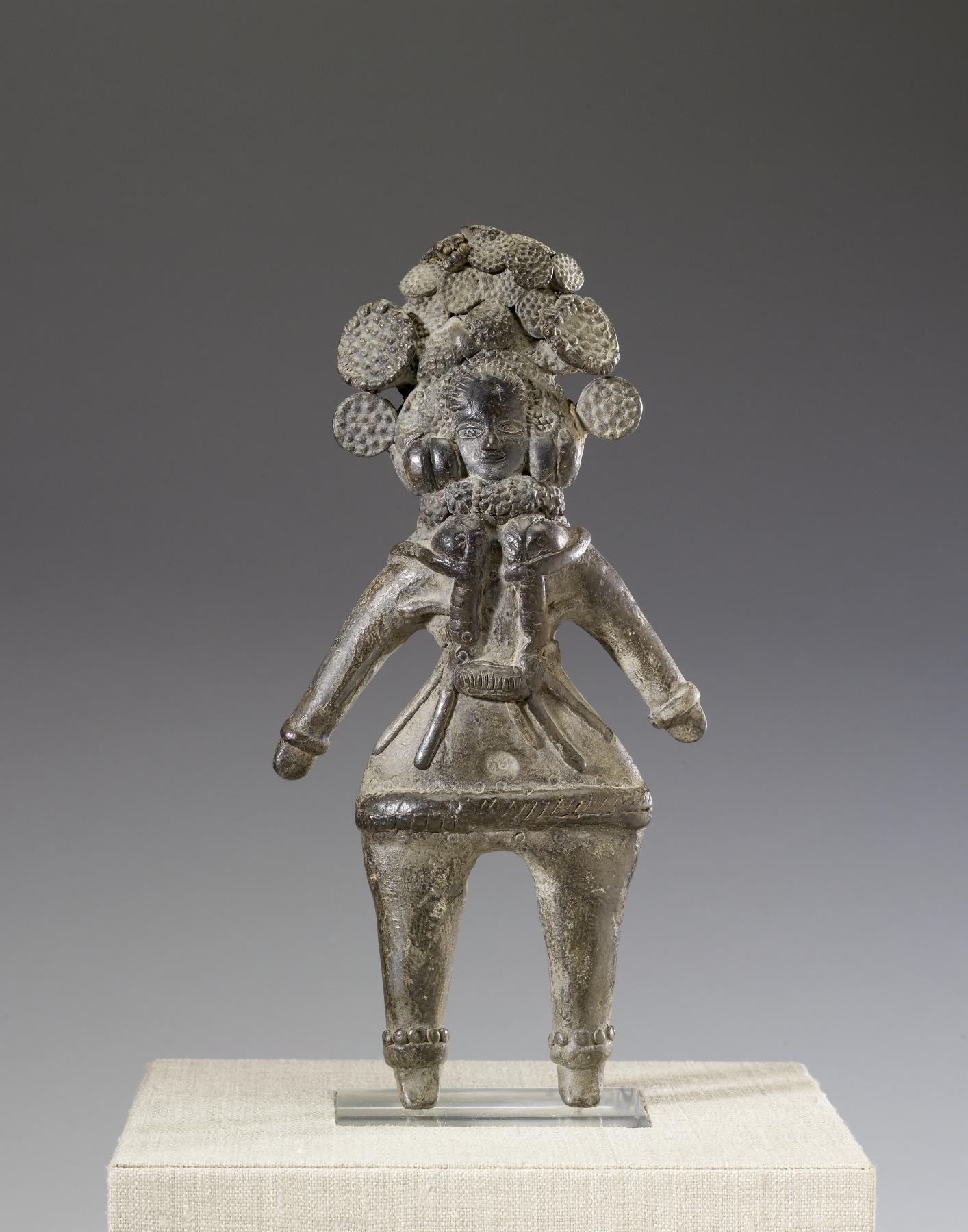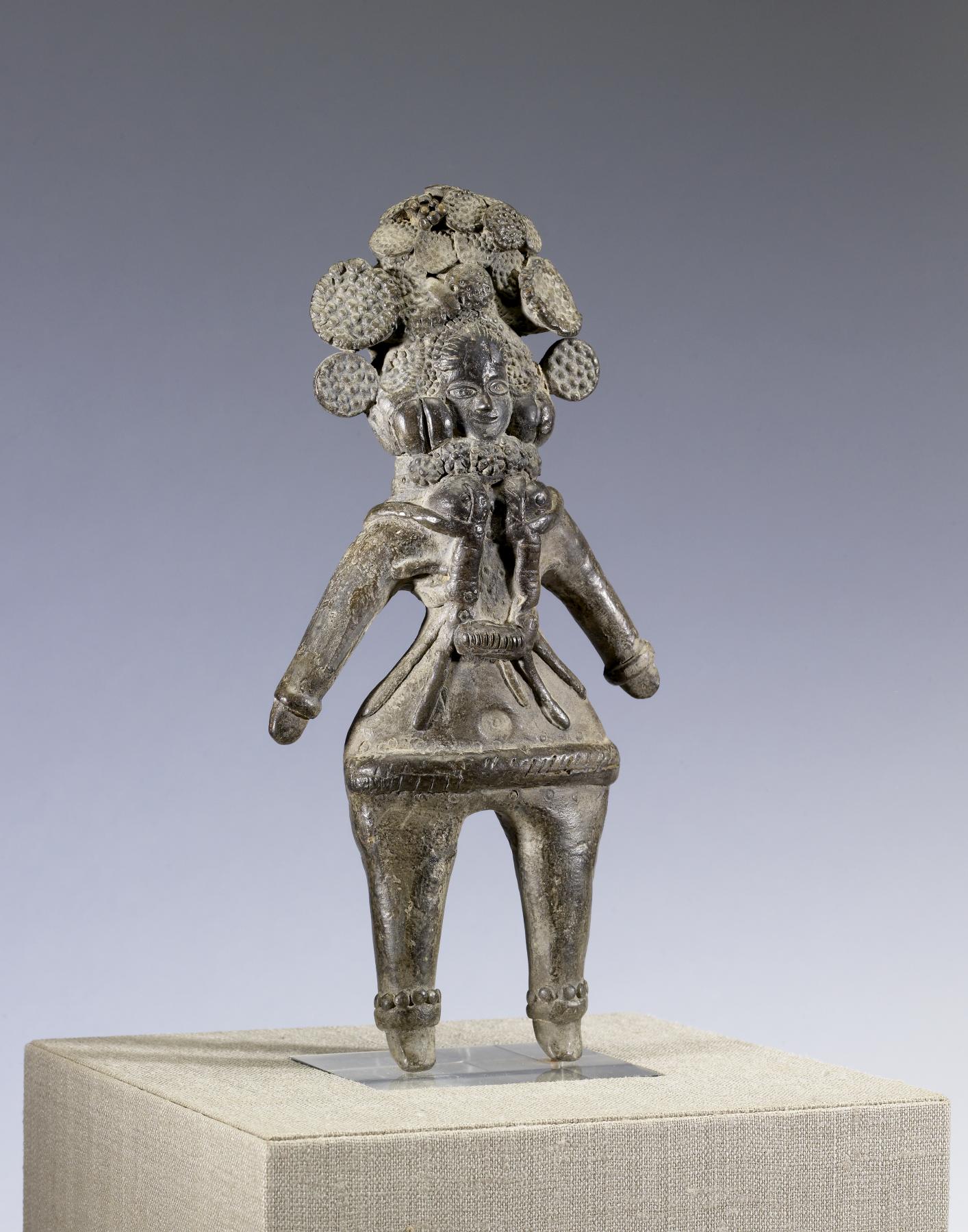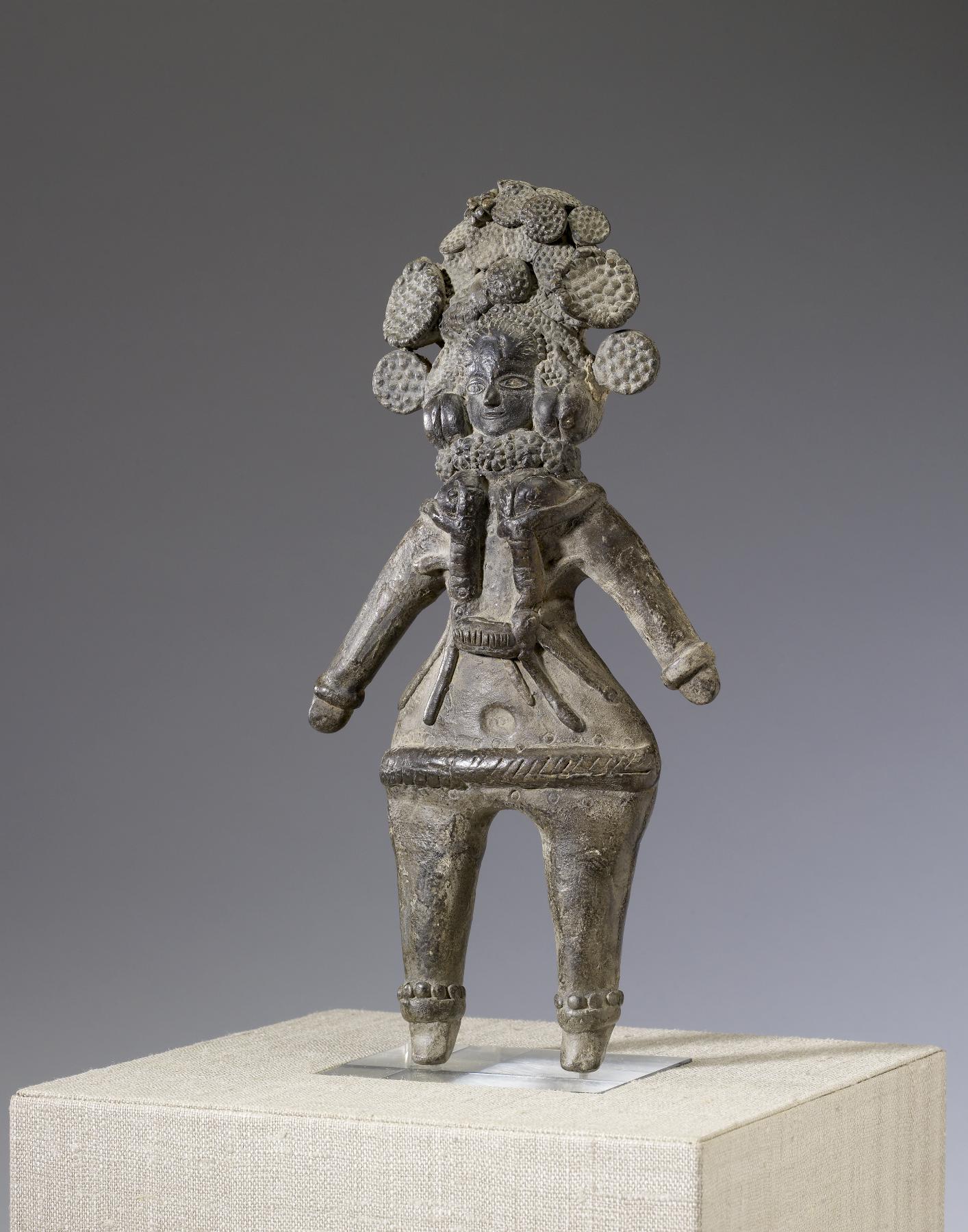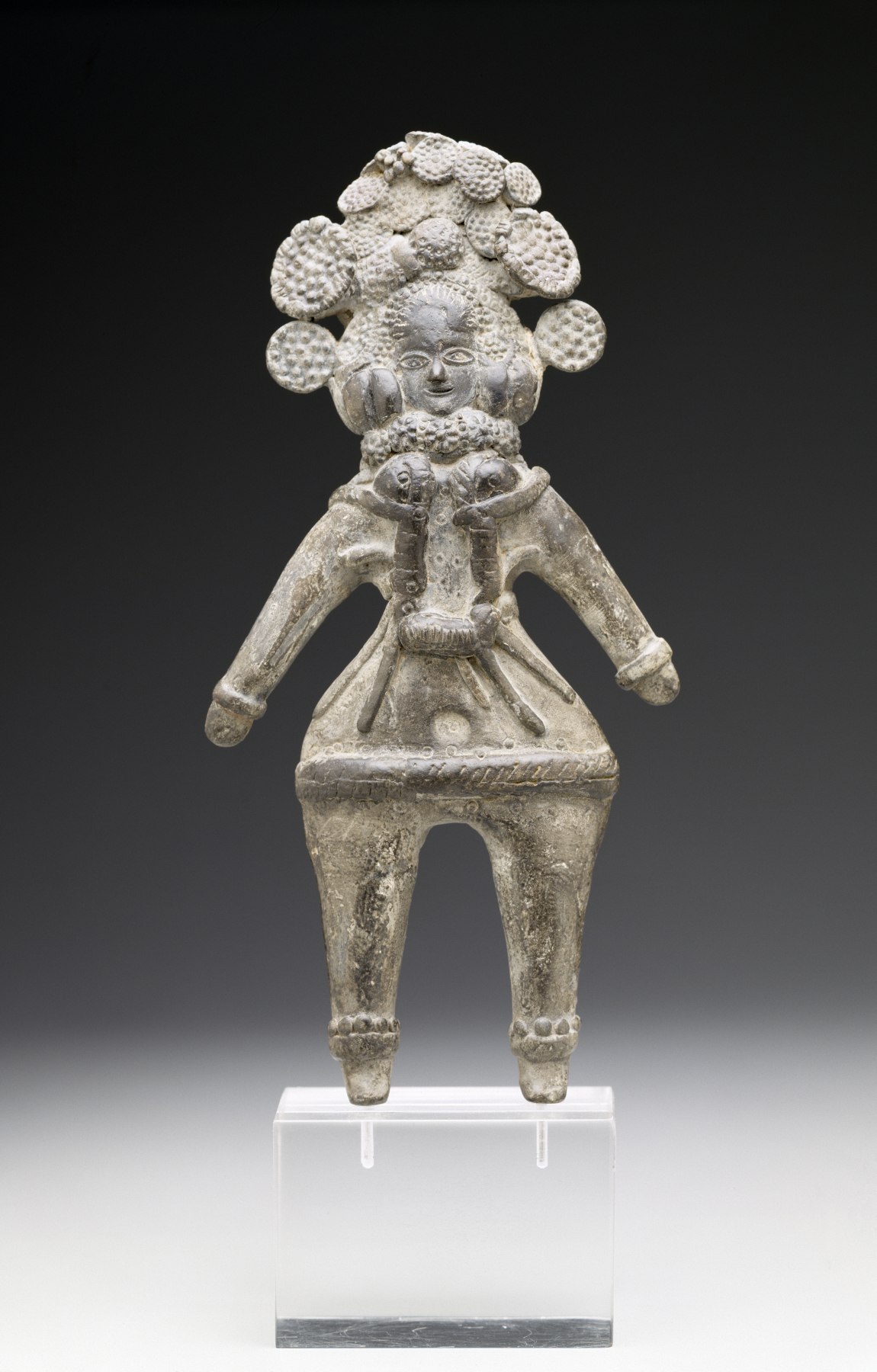Votive Female Figurine
(India, Nepal, and Tibet)
Embodying ancient hopes for well-being, the figure’s broad hips, prominent breasts, and headdress brimming with flowers and fruit communicate fertility and abundance. Such clay images were used for personal devotion; they would have been laid flat, perhaps on a shrine. Their widespread use is attested to by the large numbers that survive. The oldest example of Indian art at the Walters, this figurine is from Mathura in north-central India—one of many cities established along the Ganges and Yamuna Rivers. By the second millennium BCE, the city was an important economic, religious, and cultural center.
Provenance
Provenance (from the French provenir, 'to come from/forth') is the chronology of the ownership, custody, or location of a historical object. Learn more about provenance at the Walters.
Subhash Kapoor, Temple Art, New York City; purchased by John and Berthe Ford, Baltimore, 1983; given to Walters Art Museum, 2003.
Exhibitions
| 2001-2003 | Desire and Devotion: Art from India, Nepal, and Tibet in the John and Berthe Ford Collection. The Walters Art Museum, Baltimore; Santa Barbara Museum of Art, Santa Barbara; Albuquerque Museum, Albuquerque; Birmingham Museum of Art, Birmingham; Hong Kong Museum of Art, Hong Kong. |
Geographies
India, Uttar Pradesh, Mathura (Place of Origin)
Measurements
Figure H: 10 1/4 × W: 5 1/8 × D: 1 5/8 in. (26 × 13 × 4.2 cm); Overall with base H: 12 5/8 × W: 5 1/8 × D: 2 3/4 in. (32.1 × 13 × 7 cm); Base only H: 2 3/8 × W: 3 9/16 × D: 2 3/4 in. (6 × 9 × 7 cm)
Credit Line
Gift of John and Berthe Ford, 2003
Accession Number
In libraries, galleries, museums, and archives, an accession number is a unique identifier assigned to each object in the collection.
In libraries, galleries, museums, and archives, an accession number is a unique identifier assigned to each object in the collection.
25.249










